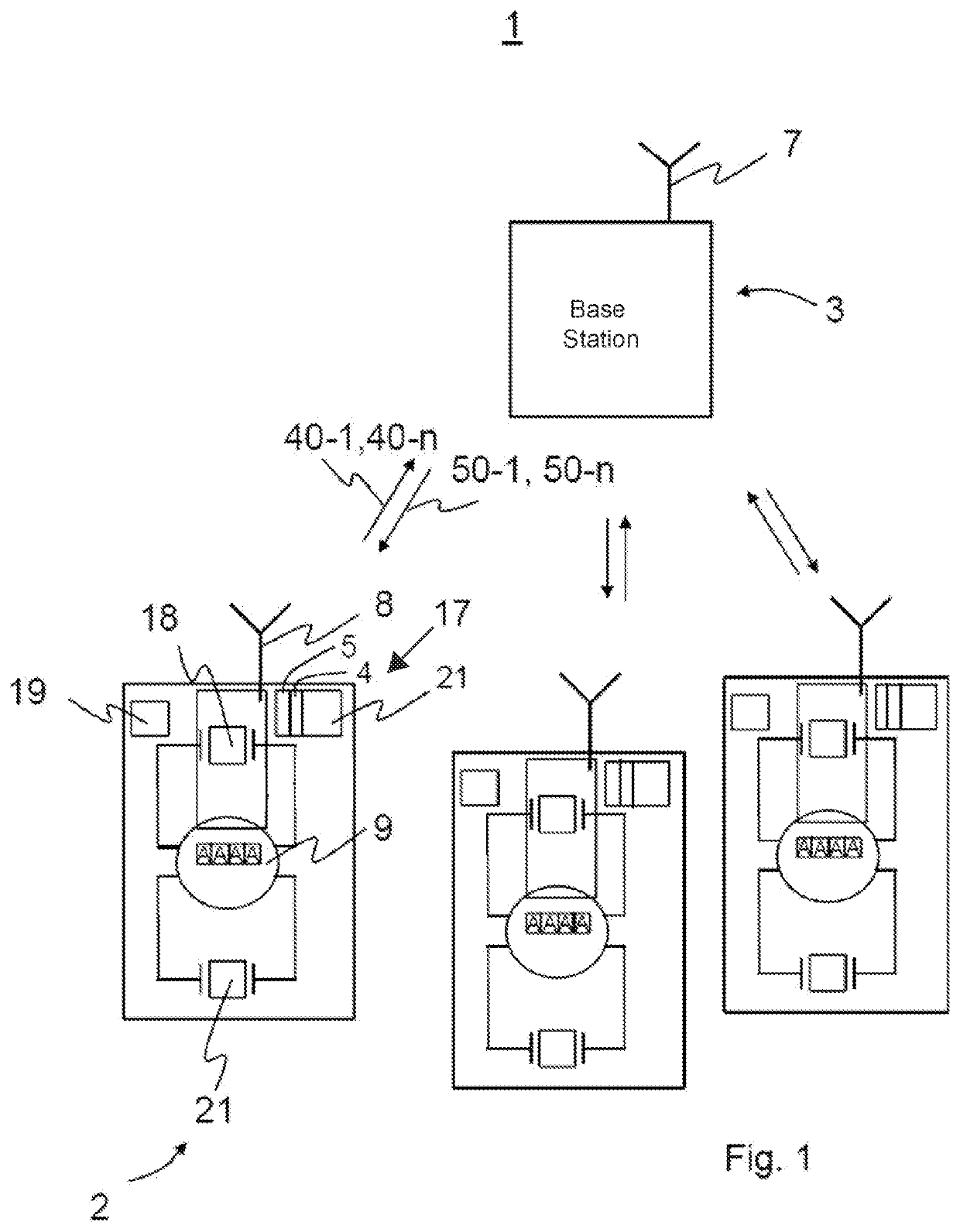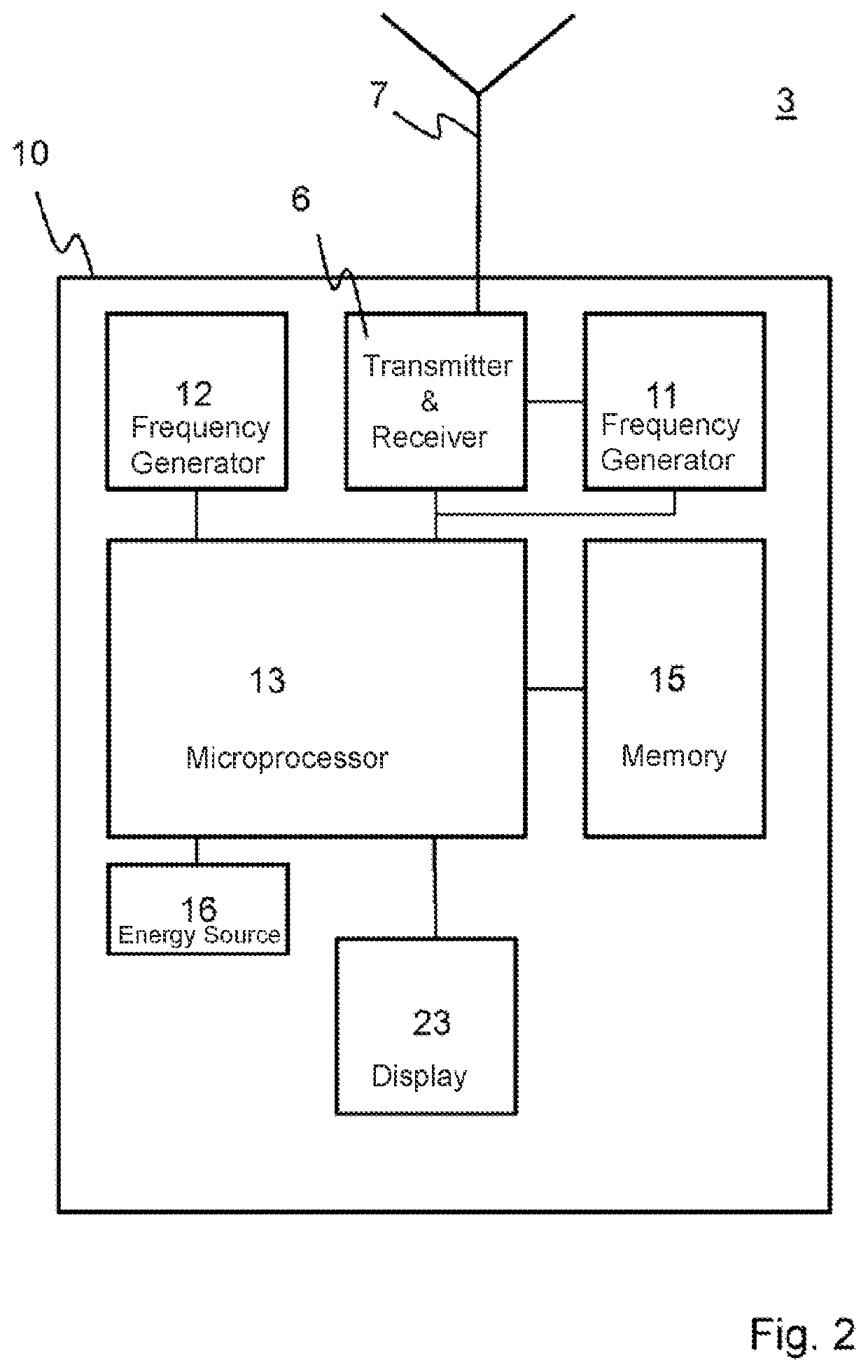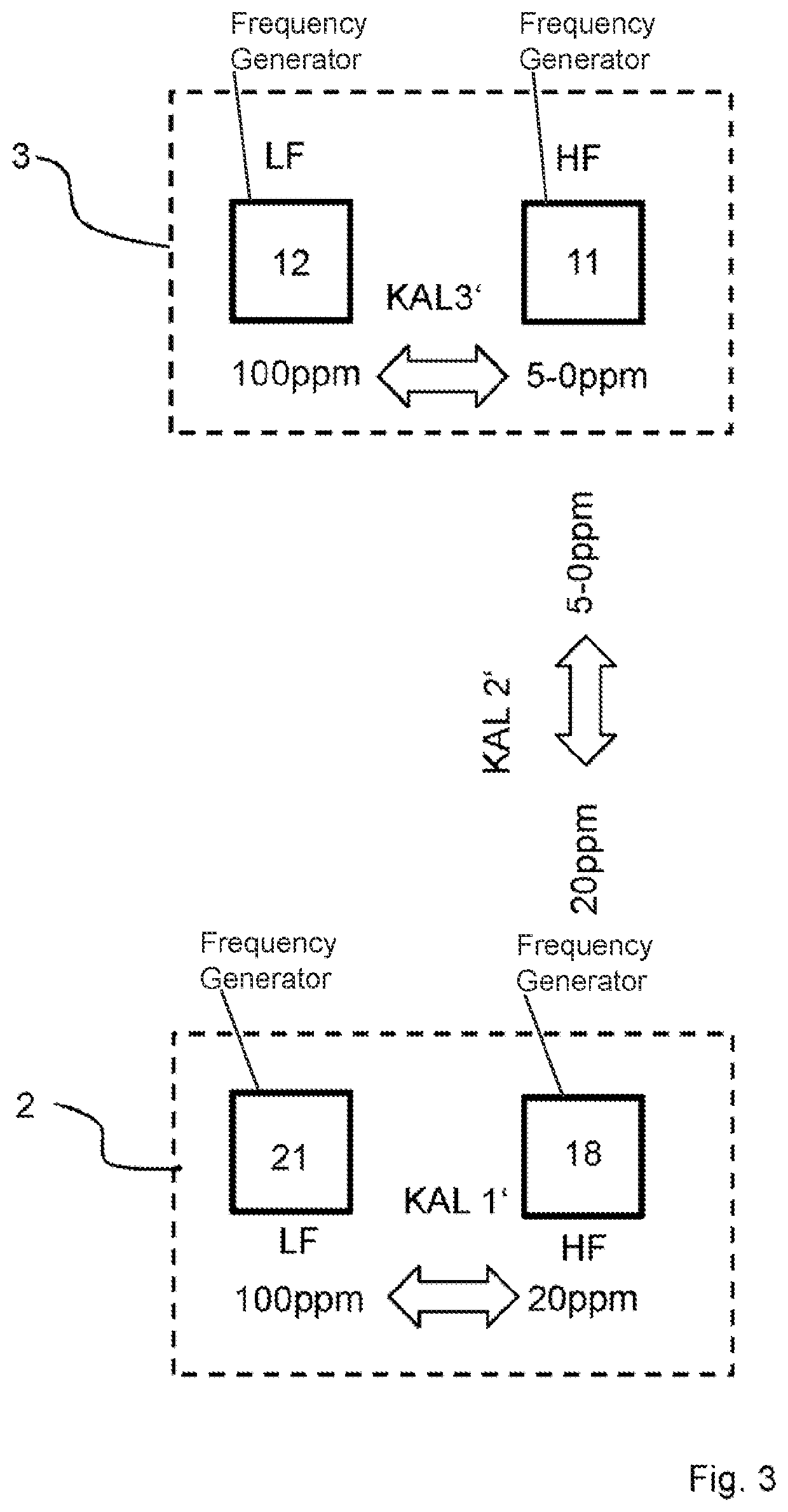Method for transmitting data between a node and a base station in a communication system, and base station and node
a communication system and data transmission technology, applied in the direction of digital transmission, transmission path sub-channel allocation, synchronisation arrangement, etc., can solve the problems of high power consumption of individual consumption meters, inability to incorporate consumption meters into a regional network, and often arisen interference, so as to improve the reception quality
- Summary
- Abstract
- Description
- Claims
- Application Information
AI Technical Summary
Benefits of technology
Problems solved by technology
Method used
Image
Examples
Embodiment Construction
[0040]Referring now to the figures of the drawings in detail and first, particularly to FIG. 1 thereof, there is shown a radio communication system 1, or radio communication network 1, that contains a base station 3, e.g. a so-called data collector, and a plurality of individual, autonomously operated nodes 2. The nodes 2 are for example sensor devices or meters of any type, for example water meters, heat meters, gas meters or electricity meters, or actuators. A common feature of these nodes 2 is that they have a communication module 17 with an antenna 8 and a control and computing unit 19. In addition, each node 2 has a first frequency generator 18 for generating a carrier frequency for the radio transmission and a second frequency generator 21 used for stipulating the times of transmission of data packets 40-1, 40-n in the uplink and for stipulating the reception window for receiving data packets 50-1, 50-n in the downlink. The first frequency generator 18 is an HF (high-frequency...
PUM
 Login to View More
Login to View More Abstract
Description
Claims
Application Information
 Login to View More
Login to View More - R&D
- Intellectual Property
- Life Sciences
- Materials
- Tech Scout
- Unparalleled Data Quality
- Higher Quality Content
- 60% Fewer Hallucinations
Browse by: Latest US Patents, China's latest patents, Technical Efficacy Thesaurus, Application Domain, Technology Topic, Popular Technical Reports.
© 2025 PatSnap. All rights reserved.Legal|Privacy policy|Modern Slavery Act Transparency Statement|Sitemap|About US| Contact US: help@patsnap.com



